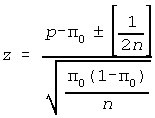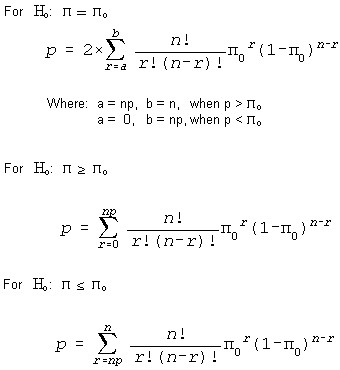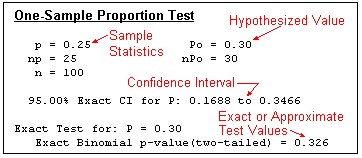The One-sample Binomial Test test is used to test if the sample was drawn from a population with a proportion equal to some hypothesized value. Both exact and approximate tests may be performed.
Hypotheses
The following hypotheses may be tested:
![]()
Where ![]() is the true population proportion from which the sample was drawn, and
is the true population proportion from which the sample was drawn, and ![]() is the hypothesized population value.
is the hypothesized population value.
Assumptions
- The sample has been randomly drawn from the population (Critical)
- The population may be modeled with a binomial distribution, which has these attributes:
- Only two possible outcomes or classifications occur with each item examined (Critical)
- The probability of occurrence of each classification remains fixed from item to item over time (Critical)
- The probability of occurrence of each item sampled is independent of all other items sampled (Critical)
Test Statistics
Approximate Test

Where the +/- sign is determined as follows for the above hypothesis:

Exact Test

Output

Note
The p-value is flagged with an asterisk (*) when p <= alpha.